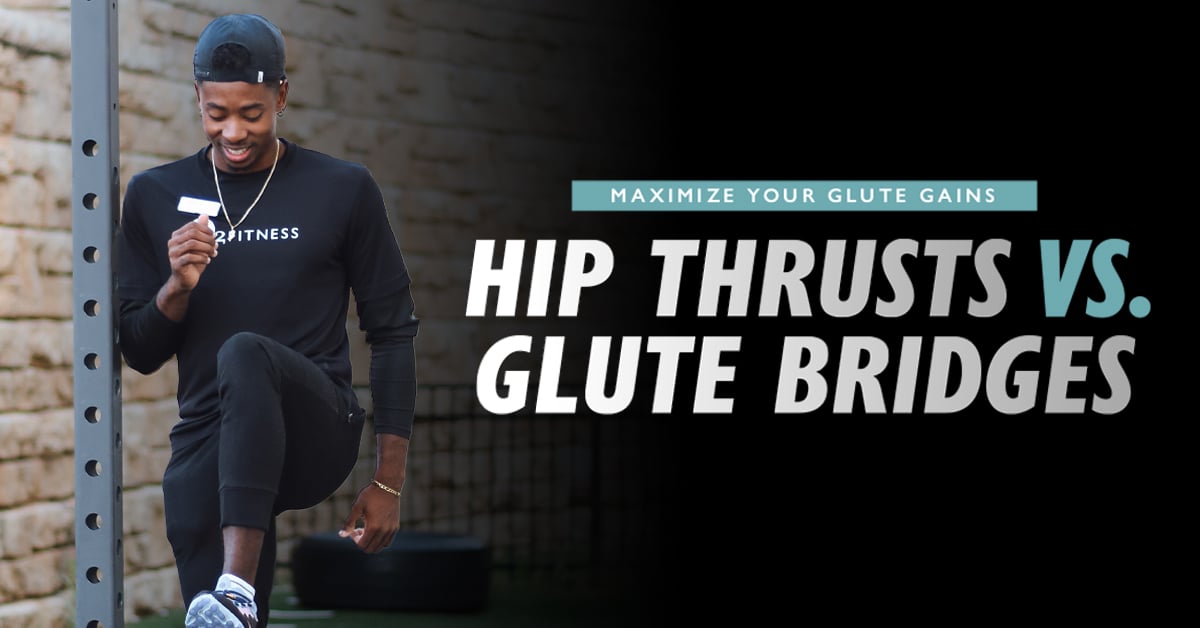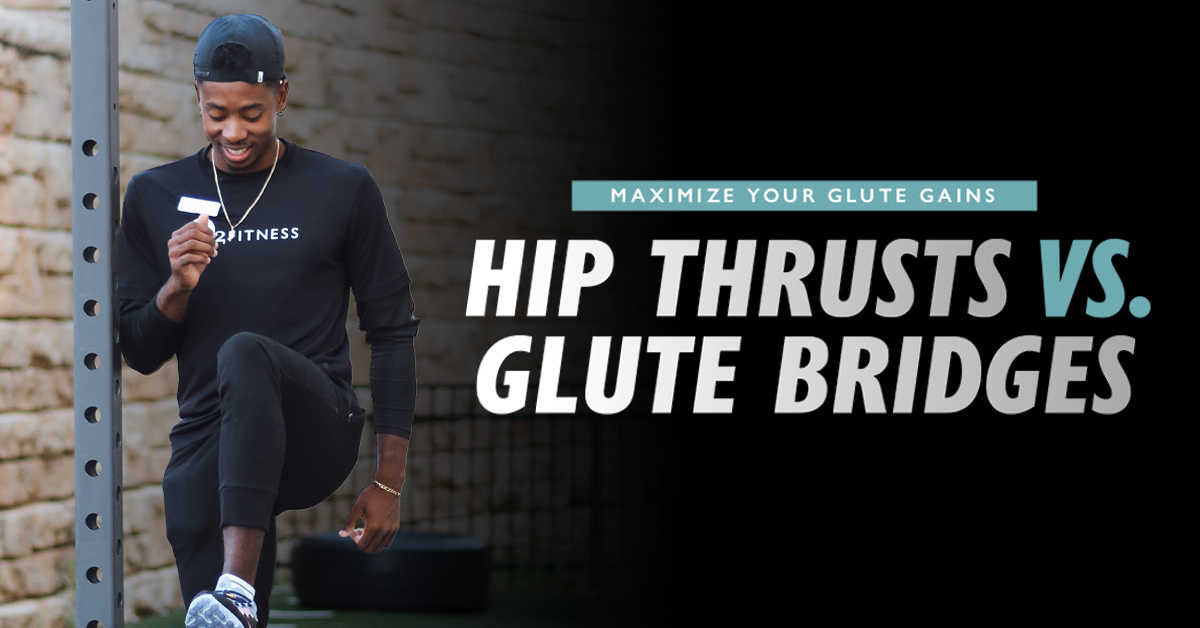When it comes to sculpting strong and shapely glutes, two highly effective exercises come to mind: hip thrusts and glute bridges.
These movements may seem similar at first glance, but they both have distinct characteristics and benefits that differentiate them.
In this blog, we're diving deep into the details of hip thrusts and glute bridges, exploring their differences, benefits, and how to incorporate them into your fitness routine for maximum booty gains!
Hip Thrusts: Building Muscle and Increasing Strength
Hip thrusts involve a dynamic movement where the hips are lifted and extended against resistance, typically using a barbell, dumbbell, or resistance band. This exercise has gained a lot of popularity for a good reason - it's a powerhouse for glute development!
Benefits of Hip Thrusts
- Muscle Building. Hip thrusts are a great choice if you're looking to increase muscle mass in the glutes. The movement allows for heavier loading during the exercise, which can help stimulate more effective muscle growth.
- Increased Range of Motion. Hip thrusts provide a longer range of motion compared to glute bridges. This means the entire muscle is effectively working during the exercise, leading to more comprehensive muscle development.
- Engages Multiple Muscle Groups. While hip thrusts primarily target glutes, they also engage your hamstrings, quads, and lower back muscles. This makes them an important compound exercise to add to your weight training routine.
How to Incorporate:
- Add Weight Appropriately. Start with a weight that challenges you but allows for proper form throughout the set. Gradually increase the weight as you become comfortable during the movement!
- Pick Your Rep and Set Range. Aim for 3 to 4 sets of 8 to 12 reps. Adjust these recommendations based on your specific goals and fitness levels.
- Explore and Add Variations. Try experimenting with single-leg hip thrusts or using different equipment like resistance bands, barbells, or dumbbells.
Glute Bridges: Optimal Muscle Activation and Engagement
Glute Bridges focus on moving through a controlled movement where the hips are raised off the ground while maintaining a bridge position. This exercise is best known for its effectiveness in glute activation, which makes it a staple in warm-ups and bodyweight strengthening routines.
Benefits of Glute Bridge:
- Muscle Activation. Glute bridges are great for targeting and activating the glutes because they offer a focused and isolated contraction effective for activation and strengthening. This type of muscle activation leads to stronger development in the glutes, enhances your functional movement, and reduces your risk of injury while moving through the rest of your workout!
- Stabilization. When performing glute bridge, the body is positioned where the upper back and feet support your weight. This requires the activation and engagement of various stabilizing muscles to maintain balance throughout the movement.
- Versatility. Glute bridges require little to no equipment to perform, which means they can easily be done anywhere! This makes them extremely easy to add to home or gym workouts when you need another lower-body exercise.
How to Incorporate:
- Focus on Form. Practice proper form for your glute bridges without weights or resistance. Focus on lifting your hips upward, fully extending them at the top while squeezing your glutes. Then, maintain tension as you slowly lower back down to the ground.
- Add It to Your Warm-Up. Use glute bridges as part of your warm-up to activate your glutes before heavier lifts (like those hip thrusts!)
- Utilize Variations. Experiment with elevated bridges, single-leg glute bridges, or add resistance bands to increase the intensity.
Combine Both for Optimal Results!
To build the most muscular glutes possible, consider adding hip thrusts AND glute bridges into your workout routine. Below are 3 ways that you can try to start adding these moves into your workout routine:
- GLUTE BRIGES. Warm up with 5-10 minutes of light cardio or dynamic stretching. Perform 3 sets of bodyweight glute bridges for 15-20 reps, focusing on maintaining proper form and maximizing muscle activation. Then, perform 3 sets of single-leg glute bridges for 12 reps to enhance your unilateral strength and stability before moving into the rest of your workout.
- HIP THRUSTS. Perform 3 sets of hip trusts for 8-10 reps with moderate to heavy resistance using dumbbells, barbells, or resistance bands. Stay focused on keeping the movement slow and controlled while hitting a full range of motion before moving into the rest of your lower body or full body workout.
- BOTH. Start with 2 sets of glute bridges for 12 reps to warm up and activate the glutes. Follow with 3 sets of 8-10 reps of weighted hip thrusts to focus on strength and muscle building.
When it comes to glute strength, both hip thrusts and glute bridges have their place.
By understanding their unique benefits and how they complement each other, you can create a balanced and effective glute-focused workout routine.
Remember, consistency and proper form are key! Always listen to your body, stay committed, and ask a personal trainer if you have any questions about form or how to use these moves to hit your fitness goals.
Which glute building move do you prefer to use?










.jpeg)
.jpg)
.jpg)